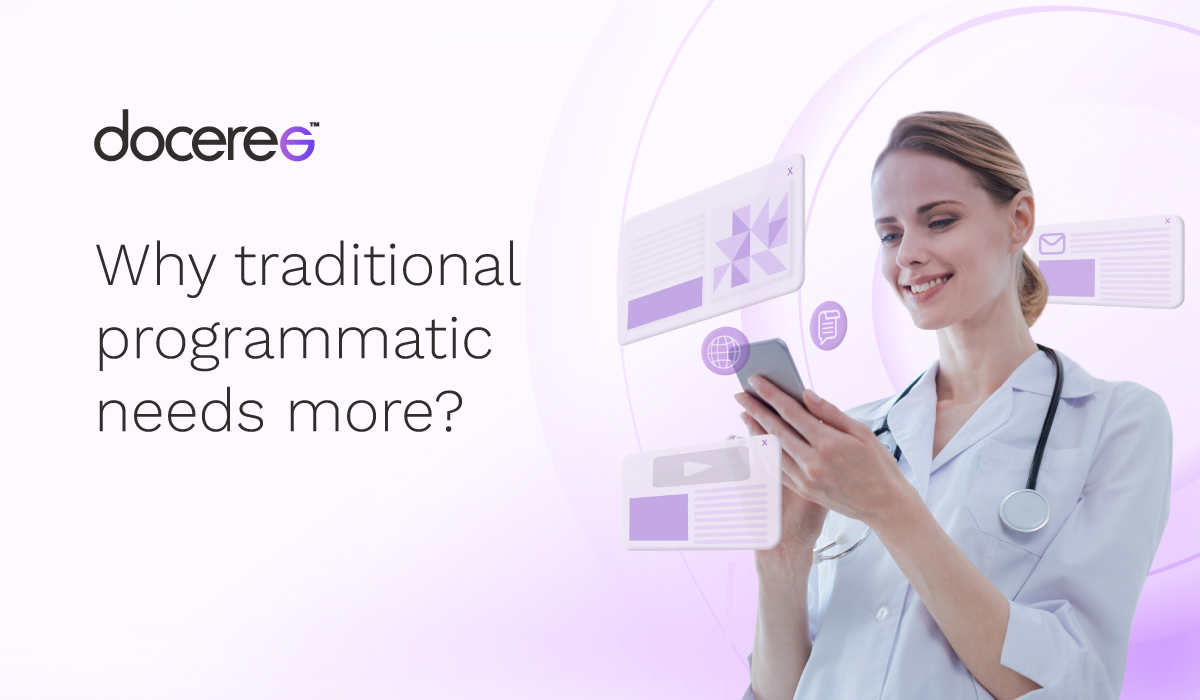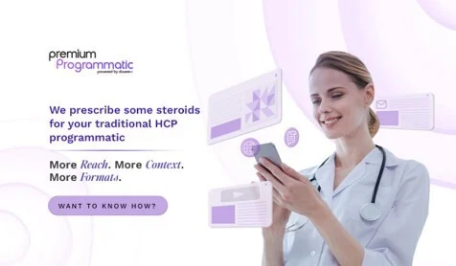
These gaps highlight why traditional programmatic must evolve—and how marketers can elevate their strategies.
Three Ways to Elevate HCP Engagement
1. More Reach: Move Beyond Single-Platform Campaigns
Healthcare professionals are not confined to a single channel. They move seamlessly across electronic health records (EHRs), telehealth systems, online medical journals, continuing medical education platforms, and even hospital intranets. Limiting your programmatic campaigns to one specialist platform restricts reach and ignores the fluidity of HCP digital behavior.
The smarter approach is to engage a network of HCP platforms rather than a single one. This ensures that messaging is consistent and omnipresent across the touchpoints where HCPs spend their professional time. By extending reach in this way, marketers can capture attention in multiple contexts and reinforce brand trust through repeated, meaningful exposure.
2. More Context: Leverage Technology for Precision Engagement
Context is king when it comes to HCP engagement. Traditional programmatic lacks the ability to drill down into the nuanced interests and information needs of physicians, specialists, or hospital administrators.
By partnering with platforms that employ advanced contextual technologies, brands can better align their messages with what HCPs are actively seeking. For instance:
- Patents for keyword intelligence allow marketers to deliver messages based on the most-searched terms relevant to medical specialties.
- AI-driven behavioral mapping identifies what an HCP is likely to read, research, or act upon in the near future.
This level of contextual precision ensures that marketing is not an interruption, but a value add—appearing at the right moment, in the right format, with information that matters to the HCP.
More Formats: Move Beyond Static Ads
The healthcare industry is shifting toward immersive, interactive experiences, and HCP marketing must follow suit. Traditional static banners or text placements lack the engagement power required for such a critical audience.
Instead, brands should expand into richer and more dynamic formats:
- Video content that simplifies complex medical information or showcases patient case studies.
- Interactive tools that allow HCPs to explore treatment pathways or simulate clinical decisions.
- AI-powered virtual assistants or digital reps that guide HCPs toward the exact information they’re seeking, whether it’s clinical trial data, new drug details, or patient affordability programs.
These formats not only capture attention but also respect the HCP’s time by delivering actionable, relevant insights.
The Future of Programmatic in Healthcare
The traditional promise of programmatic—efficiency and automation—remains valuable. But in healthcare marketing, it must be redefined through reach, context, and formats that elevate HCP engagement to new levels.
- More reach ensures no opportunity is missed across the diverse ecosystem of HCP platforms.
- More context makes every impression count by aligning with the HCP’s needs.
- More formats keep the engagement experience dynamic, useful, and memorable.
For pharmaceutical brands, life sciences companies, and healthcare marketers, the path forward is not about discarding programmatic but about enhancing it. Traditional programmatic needs more—and when we give it more, we unlock the ability to not just reach HCPs, but to truly engage and empower them.
